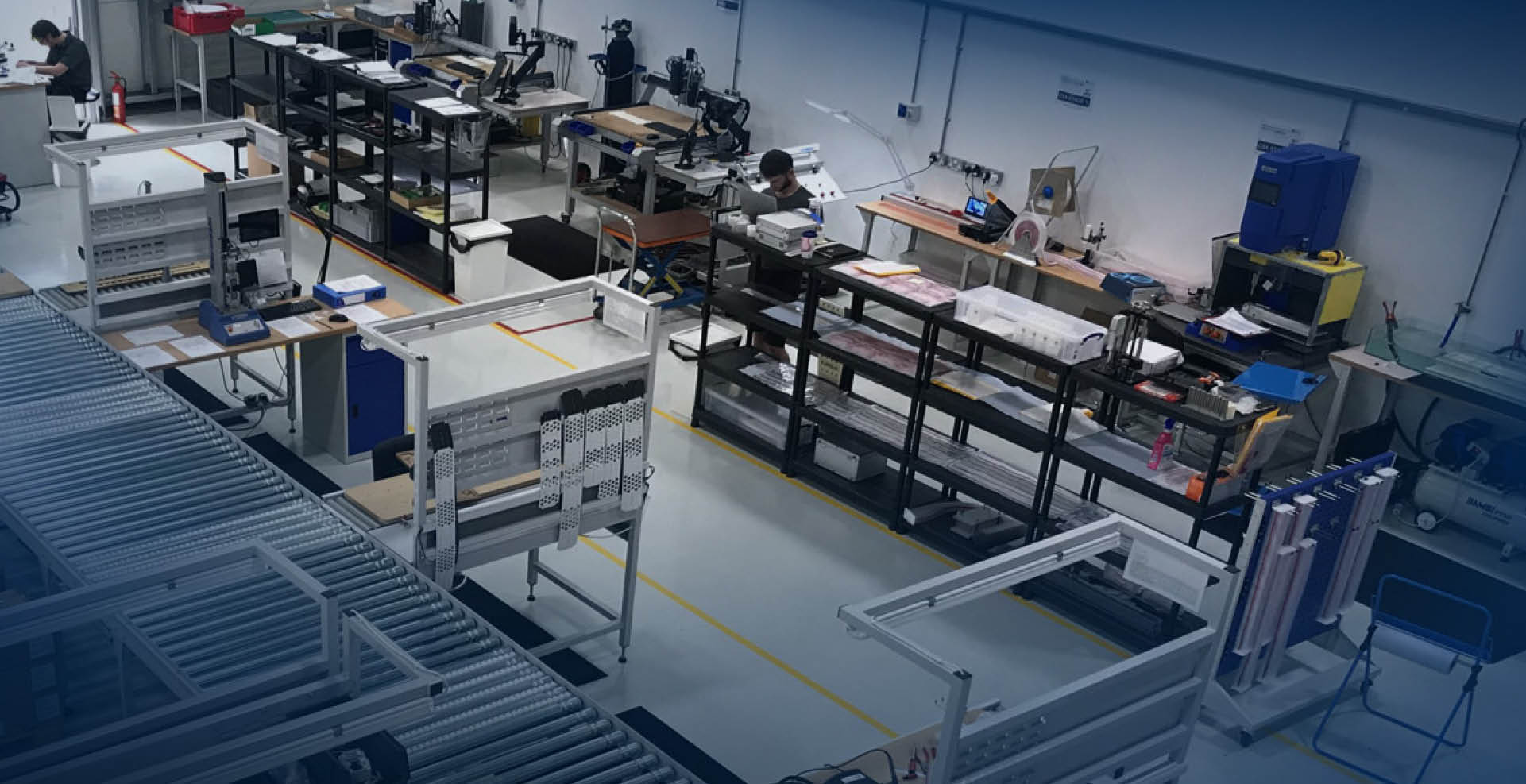A sustainable battery system supply chain across several sector

Overview
AMPLiFII came from the Office for Low Emissions Vehicles in 2017 and was granted £9.98 million of funding for the two-year project. The aim was to manufacture battery packs for use in hybrid and electric cars and to build a stronger supply chain. It was so successful that a second project was scheduled, supported by UK Research and Innovation (UKRI) via the Faraday Battery Challenge and led by Delta.
AMPLiFII-2 ran from 2018-2020 and set out to take the manufacturing technology developed as part of AMPLiFII and adapt it for implementation by the project partners: high-performance car manufacturer Ariel Motor Company, printed circuit technology specialist Trackwise, Battery Management System (BMS) specialist Potenza, Jaguar Land Rover (JLR), JCB, bus manufacturer Alexander Dennis and Warwick Manufacturing Group (WMG).
The project had three main goals, firstly to develop a scalable battery module for our partners with the ability to fit any package volume. Secondly to develop new methodologies for module-to-pack integration, including developing high-power modules that enable reduced charging times. Improvements for both the hardware and software of the BMS (Battery Management Systems) and revisions to the module design to reduce costs and enable high volume scalability were also required. The final goal was to scale up the manufacturing capabilities of our facilities for commercial purposes.
Challenges
At the beginning of the project, the 21700 cell format emerged onto the market and we decided to base our new module design and development around this form factor. The new design needed to enable high power and fast charging, which meant we needed to design a new cooling system. Cooling was a challenge in itself as the system needed to have a high cooling capacity, good contact with the cells, be cost effective, manufacturable in-house, recyclable and low weight.
The module itself needed to be designed around a high voltage (800v plus) architecture to suit new requirements of large OEMs and for performance applications. There are specific design considerations that need to be built in, most importantly safety aspects such as managing isolation, for example.
Another high-level challenge was to develop a system that is easily adapted to a multitude of shapes and sizes. This will allow battery packs to be designed for a wide array of applications and sectors.
Finally, we needed to set up a new, scalable manufacturing line to produce our modules in house.
Solutions
Firstly, we decided to design our modules using common parts, this gave us the flexibility to build our modules into different sizes for the partners’ differing requirements. This also applies to any customer who may come to us for battery solutions in the future. Building these modules into packs also needed new solutions to enable our batteries to fit the partners’ varying vehicle dimensions. We developed a system that uses features within the modules themselves to allow optimal installation into battery pack structures. There are no dedicated fixings, instead we used clamping methods, saving space and reducing weight. It also gave us the added benefit of around 25% reduced battery build times, reducing manufacturing costs.
To meet the cooling needs of new high power, fast charging modules, we needed to design a bespoke cooling system. Maximising surface area around the cells, saving weight and space, so we could keep the fluid volume to a minimum was key to create a really efficient package. Our patented solution makes use of conduits running through the rows of cells connected between two manifolds, at each end. This novel idea minimised the amount of material needed to pass fluid through the modules and enabled us to cool the length of the cell bodies to maximise heat transfer.
We then looked at optimising the distribution of cooling throughout each module within packs. We initially ran simulations to get an estimate on the cooling distribution requirements and then ran real world tests to validate our results. Packs were designed for all the partners and successfully demonstrated with Ariel’s HiPerCaR.
Staying with the high power, fast charging challenges, we needed to achieve higher isolation resistance. Creepage distance was increased by adding a protective layer between critical components and through material choice when designing the structures. These two solutions force electrical energy to take a longer path, raising the energy levels required to create short circuits.
Our modules have also been designed in a way that makes them cell agnostic, meaning that any type of cell 21700 cell can be built into our solution, whether high power or high energy, a blend of the two, or even cells from different manufacturers. This makes our modules ever more versatile.
On the manufacturing front, we successfully set up a pilot manufacturing line in house at Delta Cosworth that can process up to 5000 modules per year (which is scalable for higher volumes when required). We were assisted by WMG, who set up a line during the first AMPLiFII programme, however it was more complex and higher cost than we required. For AMPLiFII-2, WMG gave us simulation models of what we needed specifically from their initial set up, we then worked together to adjust the production line to make it as efficient as possible for our needs.
The automotive industry as a whole is benefitting from the completion and findings of this programme. Electrification opportunities have been opened to a wider range of manufacturers and applications, which should yield a positive effect on the wider environment.